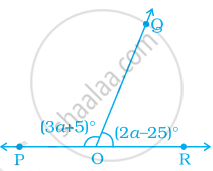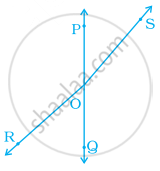Advertisements
Advertisements
Question
Solution
If the sum of the measures of two angles is 90°, they are known as complementary angles.
(i) m∠B + m∠N
= 60° + 30°
= 90°
∴ ∠B and ∠N are complementary angles.
(ii) m∠Y + m∠E
= 90° + 0°
= 90°
∴ ∠Y and ∠E are complementary angles.
(iii) m∠D + m∠F
= 75° + 15°
= 90°
∴ ∠D and ∠F are complementary angles.
If the sum of the measures of two angles is 180°, they are known as supplementary angles.
(iv) m∠B + m∠G
= 60° + 120°
= 180°
∴ ∠B and ∠G are supplementary angles.
(v) m∠N + m∠J
= 30° + 150°
= 180°
∴ ∠N and ∠J are supplementary angles.
RELATED QUESTIONS
Find the angle which is equal to its supplement.
Write the measure of the supplement of the angle given below.
108°
The difference between the measures of the two angles of a complementary pair is 40°. Find the measures of the two angles.
Among two supplementary angles, the measure of the larger angle is 44o more than the measure of the smaller. Find their measures.
(a + 30)° and (2a)° are the measures of two supplementary angles. What is the measure of each angle?
Find the supplementary angle of 35°
In the given figure, POR is a line. The value of a is ______.

If two supplementary angles are in the ratio 1:2, then the bigger angle is ______.
One obtuse angle and one acute angle can make a pair of supplementary angles.
Name the pairs of supplementary angles in the following figure:

